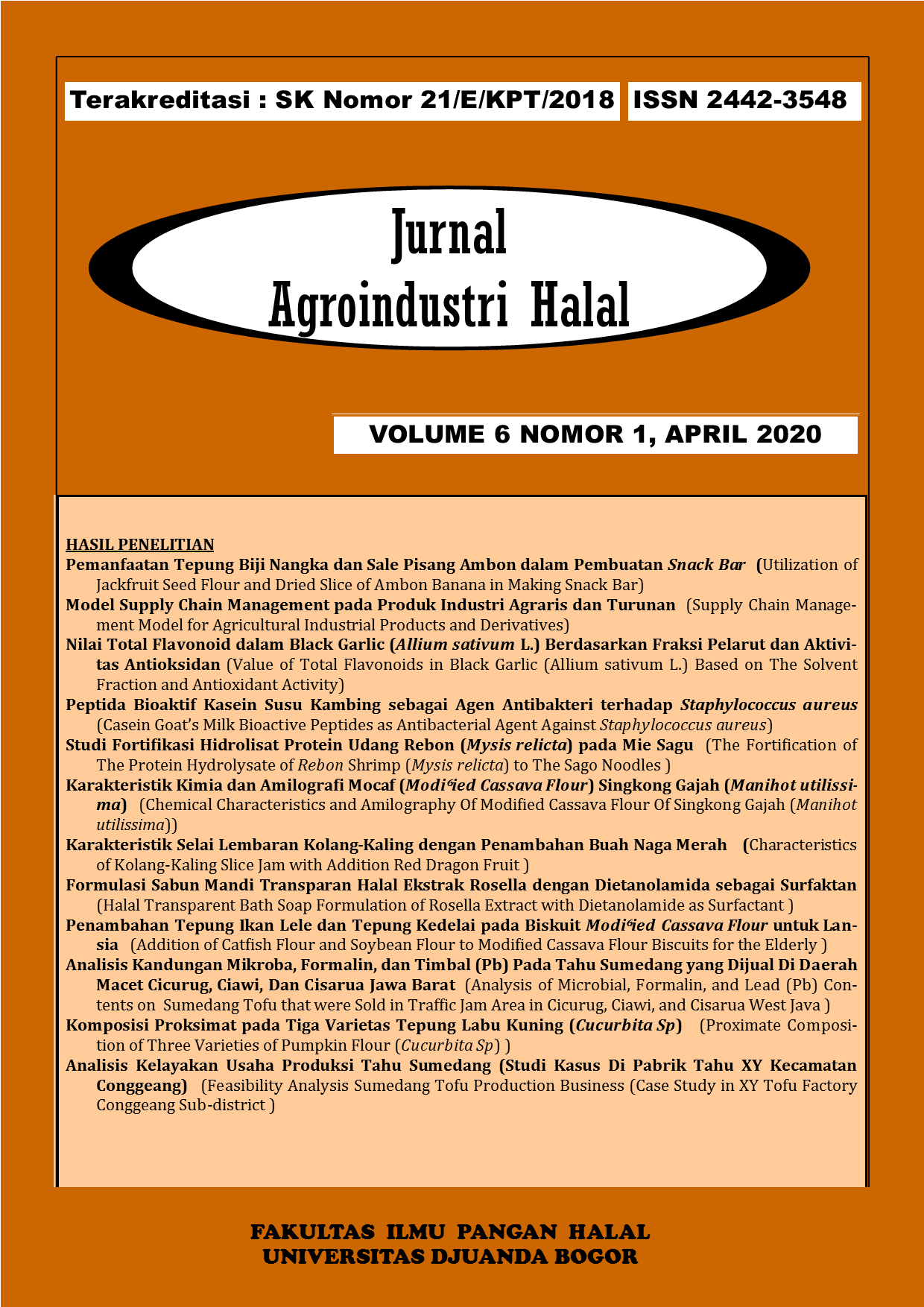Pemanfaatan Tepung Biji Nangka dan Sale Pisang Ambon dalam Pembuatan Snack Bar
Main Article Content
Abstract
The purpose of this research was to obtain snack bar with the optimum sensory and chemical characteristics. This research used a completely randomized design with five treatments and three replications. Data were statistically analyzed using analysis of variance (ANOVA) and followed by Duncan’s New Multiple Range Test (DNMRT) at level 5%. The treatments performed were the differential ratio between jackfruit seed flour and dried slice of ambon banana, namely BNP1 (80:20), BNP2 (70:30), BNP3 (60:40), BNP4 (50:50) and BNP5 (40:60). The result showed that each treatment significantly affected all the observational parameters both chemically and sensory. Jackfruit seed flour : dried slice of ambon banana (40:60) is the optimum treatment which is preffered hedonically with a description of brownish yellow color, banana aroma, banana flavored and having soft level of hardness, having 23.98% moisture content, 2.05% ash content, 11.61% fat content, 5.86% protein content, 56.50% carbohydrate content and 0.88% crude fiber content.
Keywords: snack bar, jackfruit seed flour, dried slice of ambon banana
Article Details
Authors who publish with Jurnal Agroindustri Halal agree to the following terms:
- Authors retain copyright and grant the journal right of first publication with the work simultaneously licensed under a Creative Commons Attribution 4.0 International License that allows others to share the work with an acknowledgement of the work's authorship and initial publication in Jurnal Agroindustri Halal.
- Authors are able to enter into separate, additional contractual arrangements for the non-exclusive distribution of the journal's published version of the work (e.g., post it to an institutional repository or publish it in a book), with an acknowledgement of its initial publication in Jurnal Agroindustri Halal.
- Authors are permitted and encouraged to post their work online (e.g., in institutional repositories or on their website) prior to and during the submission process, as it can lead to productive exchanges, as well as earlier and greater citation of published work
